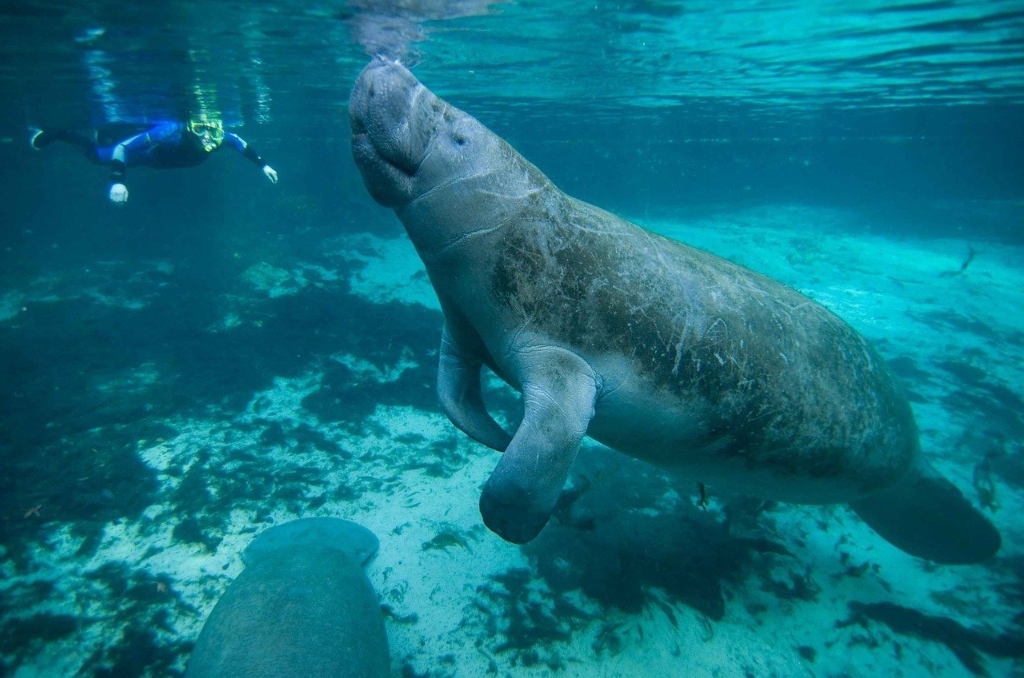Image by PublicDomainImages from Pixabay
In case you didn’t know, Florida has its own Nature Coast and aquatic preserve. That’s right.
It’s also the first new aquatic preserve in Florida in more than 30 years.
Governor DeSantis approved protections for the new 400,000-acre Nature Coast Preserve on Monday, June 29. DeSantis has made water quality improvements through environmental regulation a priority of his administration. Since taking office, DeSantis has launched a four-year, $2.5 billion plan to address water quality issues in the Everglades, allocating more than $640 million in this year’s budget. The Preserve consists of 625 miles of land along the coast of Citrus, Hernando and Pasco counties.
This region harbors 19 endangered species and is known for its manatee-watching, scalloping and fishing. Its sprawling seagrass beds are ideal nurseries for manatees, sea turtles, scallops, crabs, shrimp and about 70 percent of Florida gamefish species, including redfish, grouper and tarpon. The new aquatic preserve designation includes the state’s toughest water quality standards. It also protects against pollution and dredging that could harm the grass beds. The designation also streamlines funding in case of a catastrophe such as an oil spill. Drilling of gas and oil wells, excavation for shell or minerals, or erection of structures other than docks are not permitted within the preserve.
It also allows commercial crabbers and shrimpers to continue their work within the preserve.
Many Florida residents, including those in the Nature Coast, thought that the preserve already had protection under the law, but unfortunately, that was not the case.
There were seagrass meadows created off of Pinellas County and Florida’s Big Bend years ago, but the Nature Coast did not have its own preserve created. Some say the Nature Coast preserve was intentionally left out, probably because of power plants located at Crystal River and Anclote.
The Nature Coast Aquatic Preserve will be joined with two existing aquatic preserves off the west coast to create a contiguous protected area spanning the Gulf of Mexico’s largest seagrass meadow from the Panhandle’s Big Bend south to Pinellas County.
Citrus County’s renowned scallop season began on Wednesday, July 1. Thousands of people will come to pluck them from the seagrass beds that are, for the first time, protected as the Nature Coast Aquatic Preserve.
Sponsored by Rep. Ralph Massullo, R-Lecanto, HB 1061 was approved by the House, 117-1, and the Senate, 39-0, where that chamber’s version was spearheaded by Sen. Ben Albritton, R-Bartow.
The Nature Coast Aquatic Preserve is the first preserve created by Florida lawmakers in 32 years and the 42nd established since the Florida Aquatic Preserve Act of 1975 allowed state-owned submerged lands with “exceptional biological, aesthetic and scientific value” to be classified as aquatic preserves or sanctuaries. All but four of the aquatic preserves are along the state’s 8,400-mile coastline, in shallow waters of marshes and estuaries, and collectively span more than 3 million acres.
The designation also could serve as a regulatory defensive wall against oil development in the region. The move comes just on the heels of President Trump’s administration reportedly poised to lift a federal moratorium on Gulf drilling off Florida after November’s elections, despite vehement bipartisan opposition from Florida’s Congressional delegation and state lawmakers. The state can lease oil and gas rights in preserves and permit drilling from outside the preserve to explore for oil and gas, but only under restricted circumstances unlikely to be approved.

